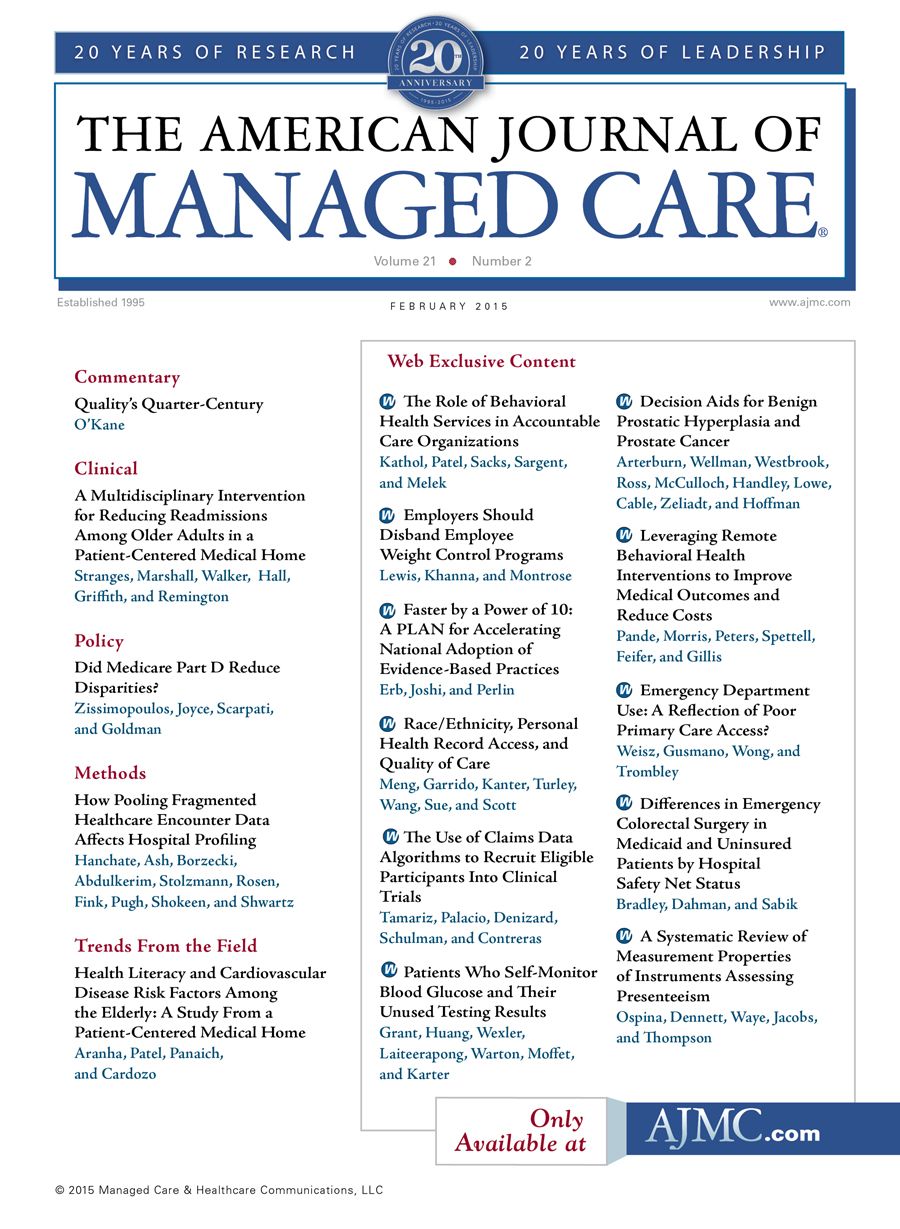- Center on Health Equity & Access
- Clinical
- Health Care Cost
- Health Care Delivery
- Insurance
- Policy
- Technology
- Value-Based Care
Quality’s Quarter-Century
Measurement and accountability are now part of the DNA of our entire healthcare system, and cost and quality are both improving.
Like The American Journal of Managed Care, the National Committee for Quality Assurance (NCQA) celebrates a milestone anniversary this year.
In 1990, we began our mission to improve healthcare quality and value through measurement, transparency and accountability. Today, we are proud that measurement and accountability are now part of the DNA of our entire healthcare system, and cost and quality are both improving.
Rather than rest on this success, we quality advocates must turn to what our experience allow us—and require us—to do next.
Steady Gains and New Highs
The accomplishments of the last quarter-century are real and significant. In 1990, measuring quality was just an idea—today it is an everyday reality. Most Americans—more than 171 million—are enrolled in health plans that report NCQA’s HEDIS (Healthcare Effectiveness Data and Information Set) clinical quality measures.
Medicare, most state Medicaid programs, and many private insurers use HEDIS to rate the value (rather than the volume) of healthcare. Plans and providers use HEDIS to gauge their performance and determine where they must improve.
Measurement will help even more people this year when the new Marketplace or Exchange plans begin reporting quality results for their more than 10 million enrollees.
Good Business and Going Retail
More and more, pay is based on performance. The result is a powerful business case for health plans and providers to make quality improvement a priority.
Quality’s connection to the bottom line is clear in Medicare Advantage, where plans focus on improving results. Enrollees often choose top performers: 60% of enrollees are in plans with 4 stars or more—a 31 percentage point increase since pay-for-performance began in 2012.
Until now, commercial insurance was largely a business-to-business transaction, where insurers sold policies to employers. Now, however, as millions of people shop for coverage in the retail environment of public Marketplaces or private Exchanges, coverage often comes with significant cost sharing, such as large deductibles.
The problem with cost sharing is that it undercuts delivery system reforms that improve cost, quality and patient experience—such as patient-centered medical homes (PCMHs). That is, high deductibles and high quality can be at cross purposes. People stint on needed care when then they are enrolled in high deductible plans, and for this reason, quality advocates are skeptical of cost sharing’s overall effect.
Beyond Quality Measurement
Though cost sharing can be counterproductive to quality, more measurement is no panacea, either.
Quality measures alone will not change the market; particularly as we evolve to a more retail buying environment, it is important that product choices make it easy for the average consumer to choose quality.
Three tools are particularly useful:
- Benefit design—Rather than the blunt instrument of the high deductible, a better approach is Value-Based Insurance Design (VBID)—low co-pays for high value services and medications, higher for those that don’t improve heath. An interesting twist is to give a financial incentive to members with chronic conditions to choose a PCMH or accountable care organization with active care management.
- Network design—Narrow networks can be good for patients if providers are selected for the network because they provide high-quality care. Information exists today on hospital safety that allows for the design of value networks. As we get better information on specialty care, great gains in quality can also be made by incenting patients to go to high-quality practices. Reference pricing is another way to drive patients to the places that will give them the best outcomes at an affordable cost.
- Payment reform for providers—Network design can help steer patients to high-quality providers, but the payment system should also reward providers for providing high-quality care.
Payment reform took a giant leap forward in January, when government and private sector leaders committed to specific goals for value-based payment. HHS secretary, Sylvia Burwell announced that it is Medicare’s intent that by 2016, 30% of fees will be paid in alternative payment models, and by 2018, 50% will be. The Health Care Transformation Task Force, a coalition of healthcare systems and organizations (insurers as well as purchasers and consumer advocates), set a goal that by 2020, 75% of payments will be value based. These goals are useful because they are specific, measurable, achievable, results-based and time-bound.
This is no small set of tasks. Over the past 25 years, consumers have become accustomed to the paradigm of choice. Providers have been rewarded for doing more and for giving more complex care. These are deeply embedded cultural norms that need to change.
Now, as payers look at what is being purchased, they can act as market makers who drive volume and rewards to the delivery systems that have accepted the challenge of delivering quality, patient-centered care that is affordable.Author Affiliation: National Committee for Quality Assurance (NCQA), Washington, DC (MEO).
Source of Funding: None.
Author Disclosures: Ms O'Kane is the is the founding and current president of NCQA.
Address correspondence to: Margaret E. O'Kane, MHA, NCQA, 1100 13th St, NW Ste 1000, Washington, D.C. 20005. E-mail: okane@ncqa.org.

Trends in Hospital Pricing for Vulnerable Emergency Department Users, 2021-2023
December 4th 2025Self-pay emergency department prices rose significantly from 2021 to 2023, especially at for-profit and system-affiliated hospitals, highlighting growing affordability challenges for uninsured and underinsured patients.
Read More
Integrated Care for Chronic Conditions: A Randomized Care Management Trial
December 3rd 2025The authors sought to understand the differential impact of payer-led community-based care management approaches on stakeholder-oriented outcomes for publicly insured adults with multiple chronic conditions.
Read More

